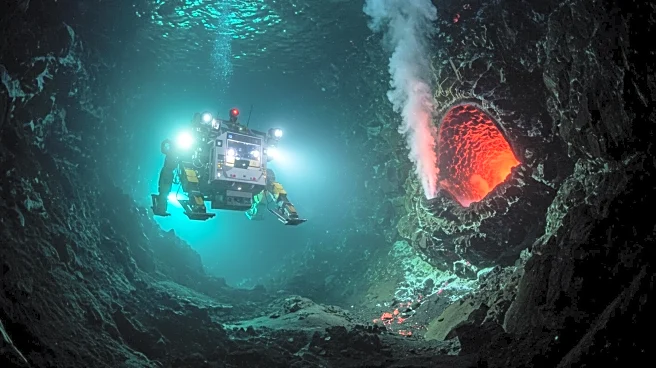What's Happening?
Recent scientific research has uncovered a significant geological discovery involving the mineral olivine, which plays a crucial role in transporting water deep into Earth's mantle. Conducted by scientists at the University of Potsdam and the Helmholtz Centre for Geosciences, the study reveals that only the oldest and fastest-moving oceanic plates can carry water to significant depths due to olivine's unique heat-conducting properties. This finding enhances the understanding of tectonic processes and raises questions about Earth's hidden water reservoirs. Olivine, a dominant mineral in the Earth's upper mantle, is essential for the movement of tectonic plates. The study highlights olivine's capacity to conduct heat through radiation, which is crucial in the subduction process where denser oceanic plates descend beneath lighter ones. This process is vital for understanding Earth's geological activity and its implications.
Why It's Important?
The discovery has profound implications for understanding Earth's water cycle and mantle dynamics. The Mantle Transition Zone, believed to be a vast water reservoir, could hold more water than all of Earth's oceans combined. Understanding how water reaches this zone is crucial for grasping Earth's water cycle and its impact on mantle dynamics. The research provides valuable tools for predicting geological phenomena such as volcanic eruptions and earthquakes, contributing to the knowledge of Earth's complex systems. The study marks a significant milestone in geosciences, opening new avenues for research into Earth's internal processes and emphasizing the necessity for interdisciplinary collaboration.
What's Next?
Future research could explore how variations in olivine composition affect its heat-conducting properties and the implications for mantle convection and plate tectonics. As scientists continue to unravel the mysteries of Earth's interior, this research offers a foundation for developing more accurate models of mantle dynamics and predicting geological events. The findings emphasize the need for innovative measurement techniques to deepen the understanding of the planet's inner workings.











